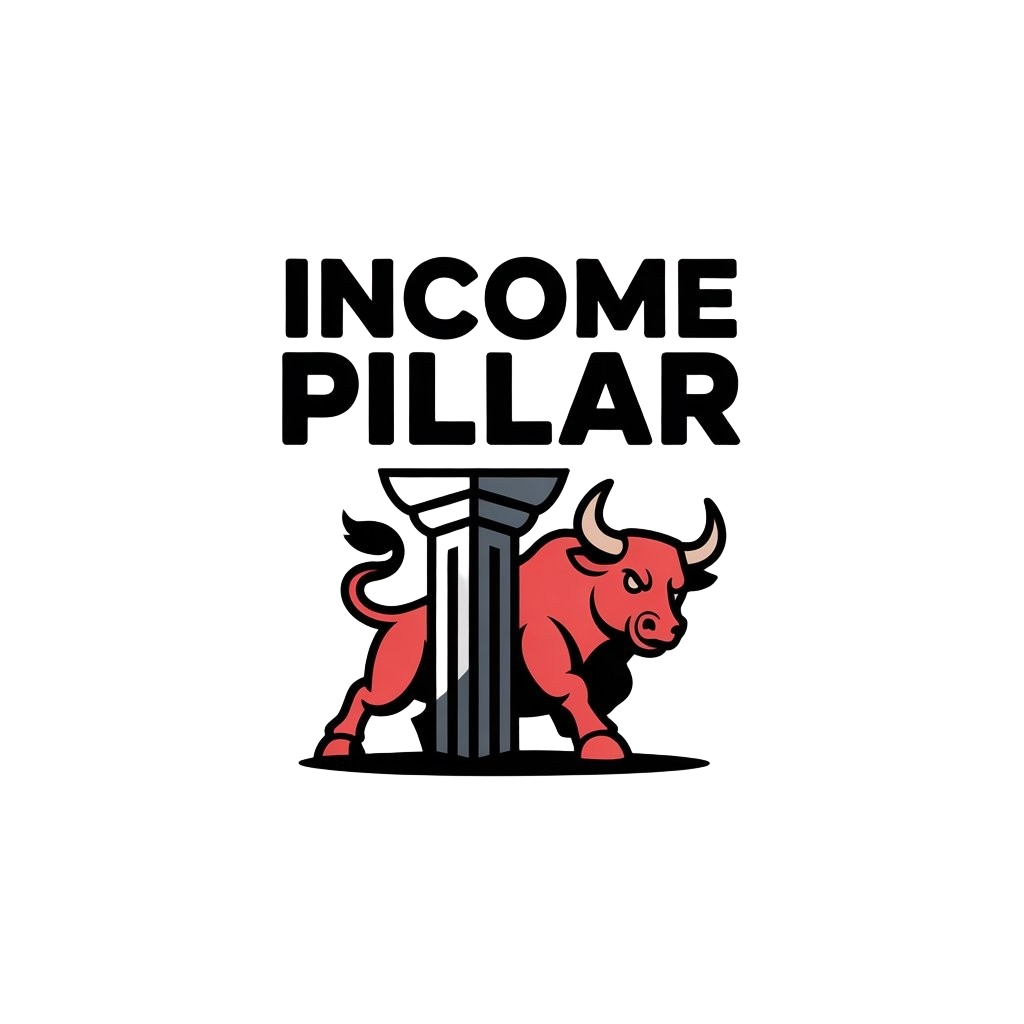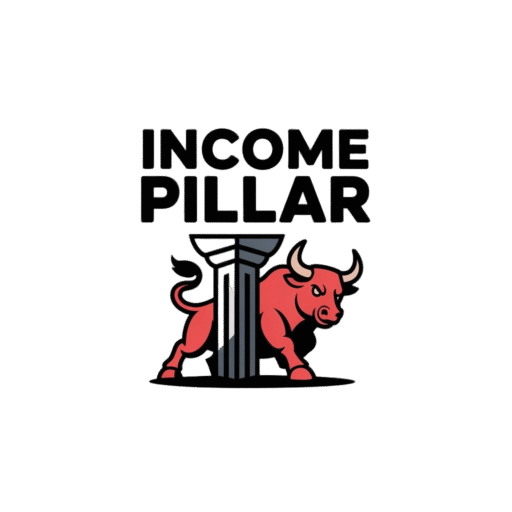Introduction
As a business owner, setting clear financial and income goals is key to success. A vision board acts as a visual reminder of your aspirations and plans to boost both your finances and online income. Using this tool can keep you focused on your targets in a practical way.
This article covers simple yet effective vision board ideas. You’ll learn how to design a vision board specifically to grow your business finance and online earnings through easy-to-follow steps, choices of images, and ways to keep yourself motivated.
Vision Boards Explained
Vision boards are simple tools—physical or digital collages of images, words, and symbols—that help you visualize your goals. For a business owner, especially those focused on growing income streams and improving financial health, they offer a way to keep your targets in sight, literally. You gather pictures of things representing your financial goals—maybe a graph showing growth, a product you want to launch online, or even the lifestyle improvements you’re shooting for.
They work by making your goals more concrete. Rather than keeping ideas floating vaguely in your mind, you pin them down physically. This can really sharpen your focus, especially when juggling so many tasks at once. You glance at your board and get reminded what you’re working toward. It’s like a checkpoint that keeps you aligned with what matters—whether it’s growing revenue, boosting online sales, or improving cash flow.
Purpose of Vision Boards
When you’re running a business, it’s easy to lose track of the bigger financial picture because daily demands pull you in all directions. Vision boards act as a targeting tool for personal and business finance goals. They help you notice what you want to improve, where your online income fits in, and remind you why you want it.
Besides having a clearer direction, it can be motivating just to see your goals laid out visually. For example, if you want to hit a specific monthly online sales number, putting that number on your board makes it more real than just a spreadsheet. It’s also a way to hold yourself accountable subtly. You might not always think about those figures during hectic days—but that board, placed somewhere you see often, nudges you back to your ambitions.
How Vision Boards Work
The process behind vision boards is straightforward, but it takes a bit of reflection. You start by identifying what you want—the financial milestones, the online income growth, or any other targets. Then you collect images, words, or symbols that represent those desires.
Arranging these elements on your board turns abstract thoughts into a concrete reminder. The repeated exposure keeps those goals active in your mind. That makes your plans easier to approach and act on.
For instance, you might include pictures of your ideal website traffic stats or screenshots of platforms where you want to increase sales. Every time you see them, it triggers ideas and actions, even if you didn’t plan to think about it at that moment. It keeps your objectives clear, helping you act purposefully instead of drifting through the workday with vague intentions.
Plan Your Vision Board
Before you start cutting out pictures and pinning things down, take a moment to get clear on what your financial goals really are. Don’t just say, “I want more money.” Try to be specific—how much income do you want to generate, and by when? Maybe it’s reaching $10,000 in monthly online sales within six months. Or perhaps it’s increasing your profit margins by 20% by the end of the year. Setting numbers makes your vision more real and easier to track.
Once you have those goals, it’s time to collect images and quotes that reflect them. Look beyond typical stock photos—browse through magazines, business websites, or social media accounts of entrepreneurs you admire. Maybe you find a quote that sparks something: “Profit grows with persistence,” or “Smart investments pave the way.” Paste those on your board.
Think about symbols too—charts going up, cashflow diagrams, or even personal reminders like a vacation spot that represents financial freedom. Sometimes, just the right image can make your goal feel closer, even tangible. And don’t forget to mix in things that inspire you on a deeper level. What motivates you when numbers feel abstract? What keeps you pushing forward? Gather all these materials together before gluing anything down.
Design Techniques That Motivate
When working on your vision board, the way you arrange and design it can make a big difference in how motivated you feel each day. I find that placing your top financial goals—like revenue targets or online income streams—right in the center can help keep them front and center in your mind. Surround these with smaller, actionable milestones or reminders of progress. This layering helps break down big ambitions into doable steps, which feels less overwhelming.
Think about adding some images or words that spark excitement or determination for you personally. Maybe it’s a photo of a successful business owner you admire or an inspiring quote. Just be careful not to overcrowd the board; too much clutter can make it harder to focus.
Layout Tips for Clarity
Organizing the board clearly improves daily engagement. Try grouping similar goals together—like separating long-term financial aims from short-term online income projects. Using sections or borders can guide your eyes easily. You could also prioritize placement based on what you want to work on first, keeping those goals near eye level.
Use bullet points or numbered lists for action steps if you like. This makes your goals feel more tangible and less abstract. And don’t forget some space for new ideas or adjustments; your vision board should grow with your business, not stay frozen.
Use of Color and Symbols
Colors almost always evoke feelings. For finances, green is a popular choice since it connects to money, but maybe you find blue calming when stress starts piling up. Play around with colors and see what resonates. Symbols can also have a strong emotional pull—like a key representing unlocking new income or an arrow for forward movement.
Try combining colors and symbols to reinforce not just the what of your goals but the why behind them. If red stirs passion but makes you anxious, use it sparingly and balance it with more soothing shades. The goal is to create a vision board that feels inviting, not stressful, when you look at it every day.
Utilize Vision Boards Daily
Making your vision board part of your everyday routine isn’t just about glancing at it once in a while. It’s about really engaging with it—letting it challenge and motivate you each day. Many business owners think a quick look is enough, but spending a few minutes actively absorbing and reflecting on what’s displayed can spark new ideas or help you spot obstacles. It’s a mental exercise that sets your priorities straight.
You might find it helpful to set specific times for this. Early mornings can be good; when your mind is fresh, your goals might feel more vivid. Or try right before winding down in the evening—sometimes your thoughts connect better during quieter moments. A quick 5-minute review works well, but you can also try journaling briefly about what you see or feel when you look at your board. This keeps your intentions clear and sharp.
Reflection isn’t just a pause—it’s adjusting. Your business is constantly evolving, and so should your vision board. Maybe some goals become less relevant or new ones emerge. That’s okay, even necessary. Perhaps a target seemed realistic at first but now feels a bit off; tweak it then. It’s not about perfection but staying honest with where you’re at. What’s resonating? What’s not? Let your vision board grow with your business and your mindset.
Vision Board for Online Income
When you create a vision board focused on growing your online income, think about including specific, tangible elements that reflect where you want to go—not just vague ideas like “more money.” For instance, images or keywords related to digital products, affiliate marketing, or email list growth can keep those goals vivid in your mind. It helps to mix financial targets with emotional motivators, like freedom or time saved, to make the vision more personal.
Many business owners find it useful to add visuals of platforms they want to leverage—like Shopify, Etsy, or YouTube—to signal where they’ll focus their efforts. Seeing these on your board daily can nudge you toward concrete actions, like building an online course or launching a digital storefront. You might also include symbols of community or networking, because online income often depends on building connections.
Sources of Online Income
To turn your vision into reality, it’s good to list specific online income streams you want to grow. Some common ones to consider adding to your board are:
- Digital product sales, such as eBooks or printables
- Affiliate commissions from recommending products or services you trust
- Subscription services or membership sites for recurring revenue
- Freelance or consulting work done remotely through platforms like Upwork
- Advertising income from blogs or social media channels
- Online courses or webinars targeting your audience’s needs
Including these on your board isn’t just about listing options; it’s a way to clarify where your energy will go. Maybe you’re already familiar with one area but hesitant about another. Seeing it every day might help you experiment a bit.
Track Online Metrics
One thing I’ve noticed is that business owners often forget to visually track the numbers that matter daily. Representing metrics on your vision board can make a difference. Try using charts, progress bars, or even sticky notes with your current stats and goals. For example, you could pin a bar graph showing website traffic growth or social followers.
Metrics like conversion rate, email list size, or monthly recurring revenue can be reminders of progress, helping you adjust quickly when things stall. Sometimes, just noticing that the email list grew by 50 subscribers can push you to create more valuable content—because those numbers feel less abstract when visible. So, think about what motivates *you* most and include those figures.
Track Financial Progress
When you create a vision board for your business’s financial growth, tracking your progress visually keeps things concrete and tangible. You might think just jotting down numbers somewhere is enough, but putting those figures front and center can make a difference. It nudges you every day to pay attention to where you stand, not just your distant goals.
One simple way is to use charts—think of bar graphs or line charts that show monthly revenue or profit growth. Pin them on your board with bright markers or stickers that highlight increases or dips. It doesn’t have to be complicated. Even a hand-drawn graph with dates and amounts can do wonders because it’s real and immediate, not some spreadsheet buried in your laptop.
Numbers are key, but displaying just raw data might not capture your eye or your motivation. So, blend numbers with small visuals like arrows or color codes to signal good months or moments that need attention. Seeing these patterns visually can surprise you, or sometimes confirm what you suspected.
Don’t forget, marking your milestones adds another layer. For example, if you hit your first $10,000 online income mark, write it somewhere on the board and circle it. Maybe add a small photo or symbol of what that achievement means—like a mini celebration. These markers can spark a sense of accomplishment and remind you that progress isn’t just a number but a step forward.
Tracking also invites questions: Are your charts telling a consistent story? What happens when a number plateaus or falls? Is there a monthly habit or action you can link to these shifts? If you notice patterns, you can tweak your approach, something that’s easier when your data is clear and visible.
You might find this visual method a bit old-school compared to digital dashboards but oddly enough, seeing everything in one place, physically, keeps your financial goals alive daily. It’s like having your business health check right there—no need to open apps or software, just a glance and you know.
Avoid Common Vision Board Errors
Too Broad or Vague Goals
When business owners create vision boards, it’s tempting to leave goals open-ended or general, like “increase profits” or “grow online presence.” But such broad aims can backfire. If your goals lack specifics, your vision board becomes a blurry reminder rather than a clear direction. You might glance at it and feel motivated but not sure what action to take next.
Try zeroing in on precise, measurable objectives instead. For example, instead of “boost online income,” aim for “gain 200 new customers through my website in six months.” The clearer you are, the easier it is to visualize—and focus energy where it counts. Precise goals also create small checkpoints that help track progress, which makes the whole process less abstract and more practical.
Neglecting Updates
Another common pitfall is setting up a vision board and then ignoring it after a while. Business changes, markets shift, and your priorities adjust accordingly. If your vision board doesn’t reflect those changes, it becomes stale, maybe even demotivating. It’s like using a map that no longer matches the roads.
Make it a habit to review your vision board regularly—perhaps monthly or quarterly. Swap out outdated images or goals. Add new aspirations as they arise. Keeping your board dynamic reminds you that progress isn’t static. Plus, the act of updating itself is a chance to reflect and recalibrate. If you don’t touch it for months, it might just become wall decor, not a tool for growth.
Examples of Vision Boards
Simple Vision Board Example
Picture a small business owner—say, someone running a local bakery. Their vision board might look pretty straightforward. At the center, a big number: a monthly revenue target, maybe $10,000. Around it, images of happy customers, product photos, and quotes about growth or saving money. They might pin reminders like “cut expenses by 15%” or “launch online orders.”
The layout relies on clear, achievable goals that keep money matters front and center. There’s less fluff here and more focus on tangible results. The board serves as a daily nudge—something quick to glance at in the morning, reminding them where to direct their efforts. It’s all about tracking progress visually and staying motivated.
One detail often missed is including subtle deadlines. For instance, a calendar clipped to the side or a list of key dates. That encourages pacing, so the big goals don’t feel distant or vague. It’s simple but hits the core financial targets directly.
Advanced Vision Board Example
Now, imagine a business owner juggling several online income streams—maybe they run an e-commerce store, offer courses, and do freelance consulting. Their vision board looks almost like a project map. It breaks down into sections for each income source, with specific financial goals pinned clearly in each zone.
Besides numbers, they include growth ideas such as “launch email campaign,” or “collaborate with influencers.” Visuals show target markets and the platforms they want to push, like Instagram stats or YouTube subscriber milestones. Performance metrics sit next to motivation quotes, sometimes clashing but that’s part of the human side, right?
The board probably includes charts or printed reports stuck in corners, tracking progress over time. Plus, a mix of short- and long-term financial checkpoints to avoid losing focus as new opportunities pop up. It’s detailed and busy, but that’s exactly the point—to capture the complexity of managing multiple financial paths while keeping an eye on overall growth.
Could such a layered approach feel overwhelming? Maybe. But for many, seeing everything laid out helps clear mental clutter rather than add to it.
Conclusions
Vision boards are more than just creative projects. They are practical tools that keep your business goals and financial targets visible every day. Filling your board with the right visuals and words will guide your focus toward income growth. The process itself also clarifies what you want to achieve online and financially.
Staying consistent with your vision board updates and reviewing your progress keeps your plans on track. Use the board not only to dream but to actively remind yourself of your business tasks and income goals. This habit supports steady growth and better financial decisions.






















